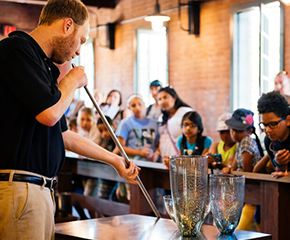Homemade Variable Condenser, Used by Charles Apgar, 1915
Add to SetSummary
In 1915, amateur radio operator Charles Apgar detected coded messages being transmitted by German employees at Sayville Wireless Station, New Jersey. Apgar invented a device to capture these messages onto Edison wax cylinders--the earliest recordings of radio signals. National security was a major concern due to WWI, and Apgar's efforts convinced the U.S. government to seize the Sayville station.
In 1915, amateur radio operator Charles Apgar detected coded messages being transmitted by German employees at Sayville Wireless Station, New Jersey. Apgar invented a device to capture these messages onto Edison wax cylinders--the earliest recordings of radio signals. National security was a major concern due to WWI, and Apgar's efforts convinced the U.S. government to seize the Sayville station.
Artifact
Capacitor
Date Made
1912-1914
Subject Date
1915
Creators
Keywords
United States, New Jersey, Westfield
United States, New York, West Sayville
Location
Not on exhibit to the public.
Object ID
00.625.287
Credit
From the Collections of The Henry Ford.
Material
Aluminum (Metal)
Bakelite (TM)
Brass (Alloy)
Wood (Plant material)
Dimensions
Height: 4.75 in
Width: 1.5 in
Length: 11.125 in
Inscriptions
handwritten: R-3060





